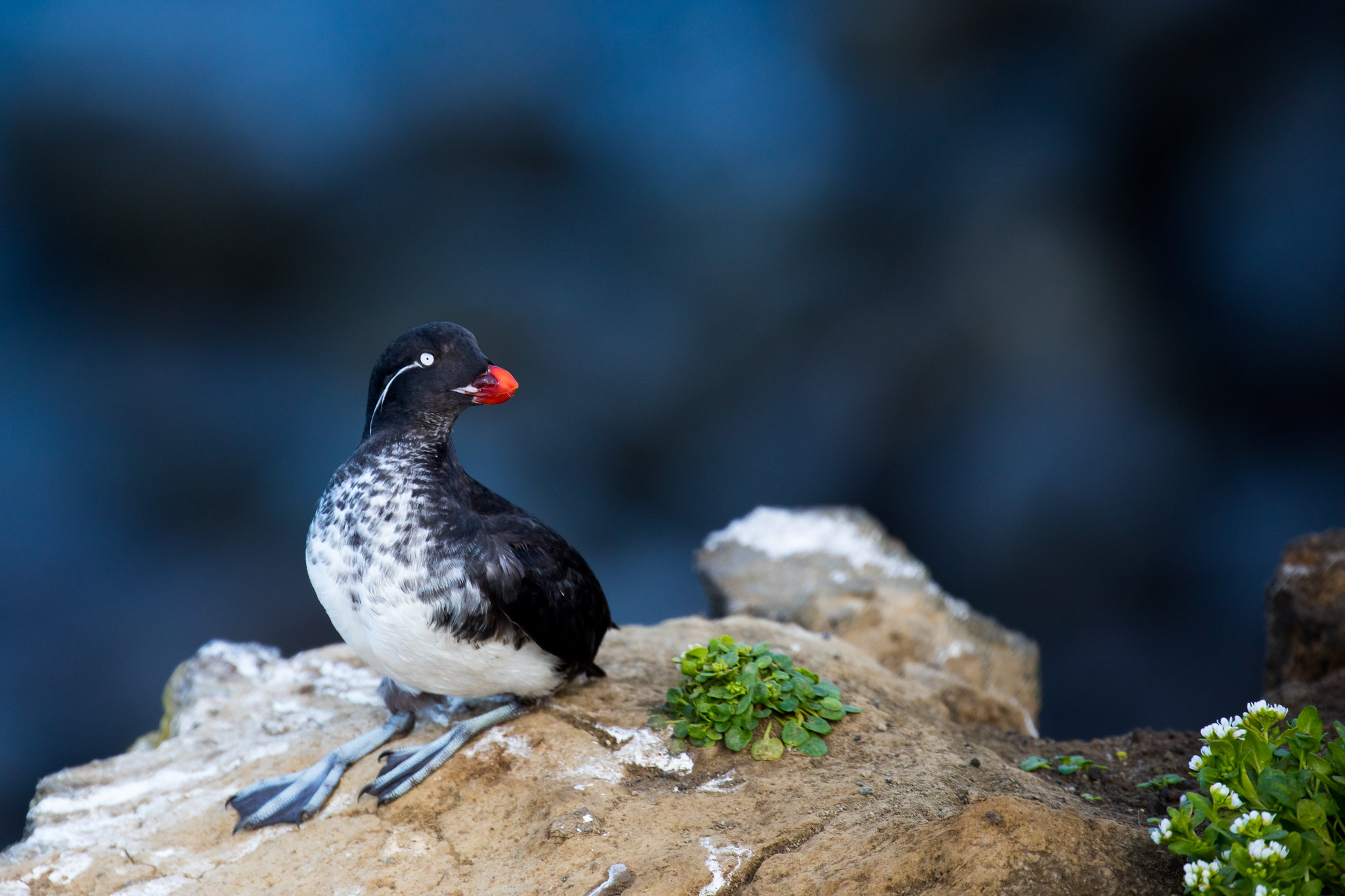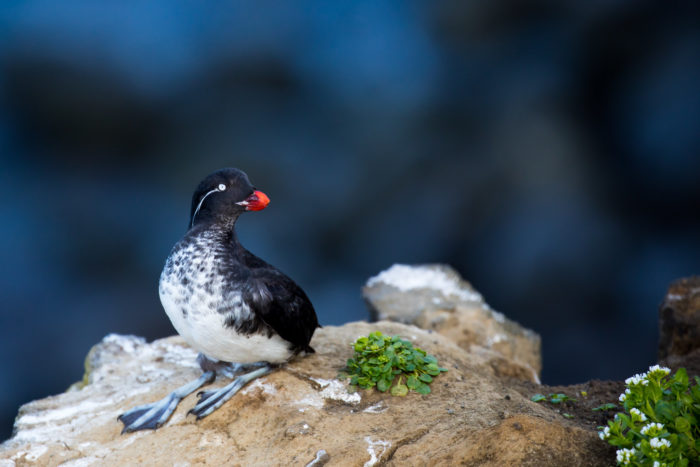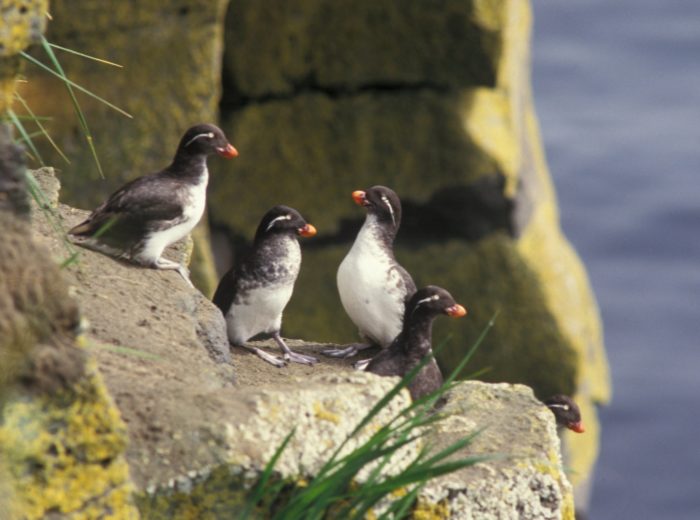
Sea Wonder: Parakeet Auklet

Photo credit: Lisa Hupp/USFWS
Description
The Parakeet Auklet is a small, chunky species of seabird. These birds have white undersides and black wings, tails, chins, throats, and upper bodies. Parakeet Auklets are identifiable by their pale eyes, round bill profiles, and long, white head plumes. When swimming and diving to hunt for aquatic prey, these seabirds’ large feet enable propulsion, steering, and stabilization. Some of the Parakeet Auklet’s physical characteristics, including its bill, plumes, and coloration, change throughout the year and look different in winter. Though these birds often gather in pairs or small groups, they are not often spotted in large flocks. During breeding and mating season, the typically quiet Parakeet Auklet becomes very vocal to perform duets with its mate.
Diet and Habitat
Parakeet Auklets are often found throughout the Bering Sea, south coastal Alaska, and the North Pacific, depending on the time of year. In winter, these birds migrate south and have been spotted as far from home as California, Japan, Sweden, and the Hawaiian Islands. Keep an eye out for migrating Parakeet Auklets while visiting Cordell Bank, Greater Farallones, Monterey Bay, Channel Islands, Papahānaumokuākea, and Hawaiian Islands Humpback Whale National Marine Sanctuaries! While nesting, these birds often shelter from the elements on rocky shorelines and sea cliffs. Caves, rock gaps, and holes or burrows in grassy slopes make great locations for Parakeet Auklet nests.
Life History
In springtime, Parakeet Auklets return from the sea to nesting areas along rocky island shorelines in the North Pacific and begin courtship. After finding a rocky perch, males produce whinnying trills to attract females. When an interested mate arrives, the couple produces calls in unison. These monogamous birds are faithful to their mates and maintain pair bonds by calling to one another and rubbing their bills together. Sometimes, pairs will even mate with each other for consecutive seasons. Once Parakeet Auklet pairs have been established, mating occurs at sea, where males fend off rival birds using threat displays. In late spring, the birds breed in isolated pairs or small, loose colonies. Female Parakeet Auklets each lay a single small, whitish egg which is incubated by both parents. Once these eggs hatch, parents also share chick-rearing responsibilities. Parakeet Auklet parents feed and care for their young for around 35 days until fledging, at which point chicks leave their parents and journey independently out to sea.
Threats and Conservation
Parakeet Auklets have a conservation status of Least Concern. Although these birds are not a high conservation priority, populations are believed to be in decline. Like all seabirds, Parakeet Auklets are threatened by climate change, marine pollution, plastic ingestion, and entanglement and drowning in fishing nets. These birds also face threats from invasive predators like foxes and rats.

Parakeet auklets on St. Paul in the Alaska Pribilof Islands. Photo credit: Allen Shimada NOAA/NMFS/OST/AMD.
